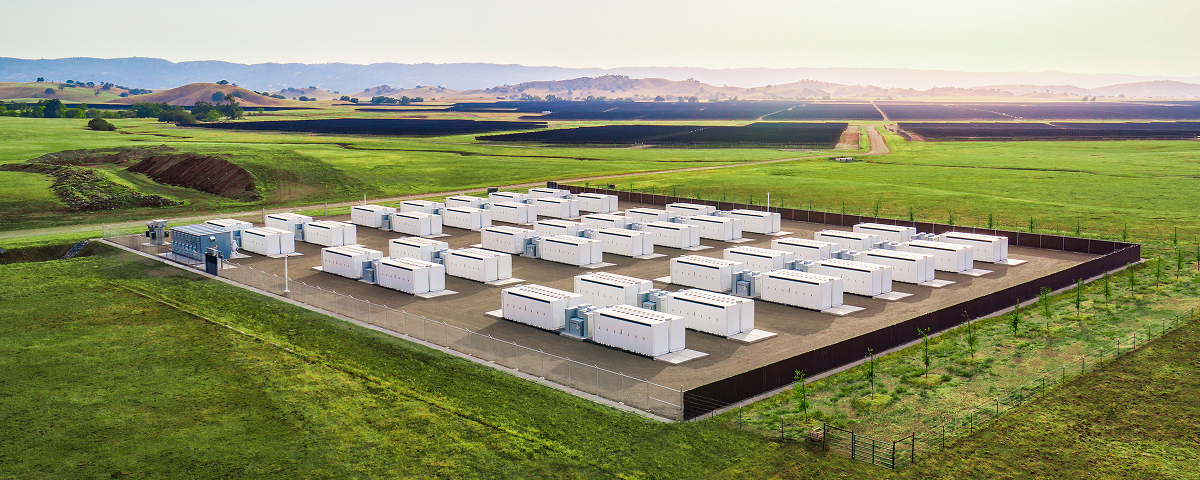
Contact is developing a 100-megawatt battery at New Zealand Steel’s Glenbrook site, in south Auckland, on industrially zoned farmland near the corner of Brookside Road and Glenbrook Beach Road. This site is ideal as it has flat land and a high voltage connection to the national grid.
We have contracted Tesla to supply the battery, a 56 battery-unit Megapack 2 XL system, which is expected to be operational by March 2026. It will be the same size as a rugby pitch – approximately 50m by 100m.
Contact also has the option to expand the capacity of the battery to 130 MW at this site; a move which would make it New Zealand’s biggest battery.
The video below shows a 1News story about the grid-scale battery at Glenbrook.
How it works
The lithium-ion batteries (similar technology to those used in EVs and laptops) will store electricity generated by New Zealand’s hydro, geothermal and wind power stations when there is low demand. Without this storage this electricity would otherwise go to waste.
Then, when demand is high, the battery will provide stored power to the national grid, delivering electricity when it is needed most. The idea is to only use the battery during times of high demand, to assist with peak load, rather than running it constantly.

The benefits
The battery will be vital for the security of electricity supply across the country, and it will help make the national grid more resilient. The battery is a bit like the Swiss Army Knife of the electricity system, performing a range of roles that will ultimately keep the lights on and reduce carbon emissions.
The battery will:
Our partners
Tesla is responsible for the supply and commissioning of the battery. It is the company’s first Megapack 2XL system in New Zealand. Tesla will also provide long-term maintenance services.
Having the battery based at the Glenbrook site further strengthens Contact’s existing partnership with New Zealand Steel to deliver resilience building decarbonisation initiatives at scale and speed. In May 2023, Contact and New Zealand Steel announced a flexible off-peak arrangement where Contact will provide 30MW of electricity to New Zealand Steel for its new electric arc furnace. This would almost halve the steel mill’s carbon emissions. More information can be found here.
Contact will also be directly engaging local partners on the project to ensure the economic benefits of the construction project stay with New Zealand businesses as much as possible.
Safety
The risks and probability of a safety issue have proven to be extremely low, and we have taken every precaution to minimise any health and safety risks. Thousands of similar units are already installed around the globe, and they have been designed and extensively tested by Tesla to guarantee safety for everyone nearby.
All potentially hazardous substances are within sealed and closed battery units. They will be automatically monitored 24/7 by Contact and Tesla so in the highly unlikely event of a fire in a unit, the battery system will immediately isolate itself and the cabinets are spaced so fire can’t spread. In such an event, we will follow our emergency response plan agreed with Fire and Emergency New Zealand. There is no risk of an explosion.
Site development updates
At Contact, we believe it is important to be a good neighbour. We will keep residents and businesses based near the site up to date on the construction work and any potential effects it could have on them through newsletters and emails.
Location: New Zealand Steel’s Glenbrook site in south Auckland
Capacity: 100MW (200 MWh)
Energy type: Battery storing electricity generated by New Zealand’s hydro, geothermal and wind power stations when there is low demand.
Construction: Begun July 2024 with the battery expected to be operational by March 2026.
For independent complaint or pricing advice, click here. UDL & Powerswitch can help.
To read our Residential Consumer Care policy on how we'll keep you safe and connected, click here.